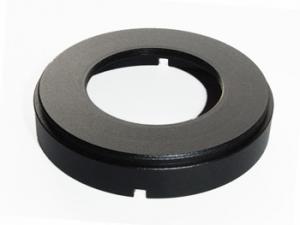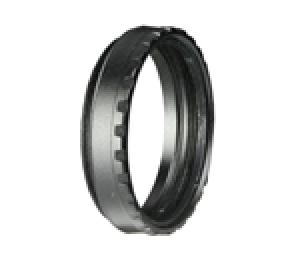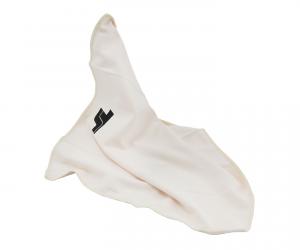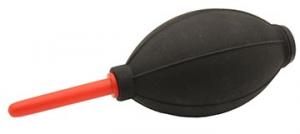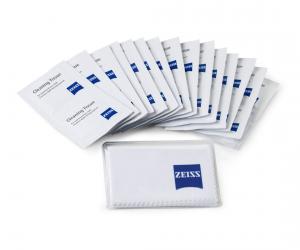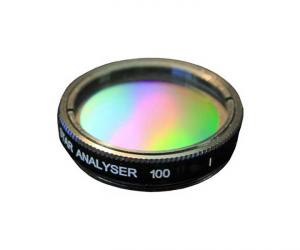- Telescopes
- Overview:
Telescopes - Achromatic Refractor
- Apochromatic Refractor
- Overview:
Apochromatic Refractor - ED Refractor - less color aberration than an achromatic
- SD APO - color free 2-element APO objective
- EDT APO - 3 element ED objective
- High End APO with 3-element APO objective - no color aberation
- Flatfield APO with flat field for Astrophotography
- All Apos and EDs from all manufacturers - large overview
- TS APO and ED from Japan with high quality optics
- Overview:
- Newtonian Telescopes
- Dobsonian Telescopes
- RC Ritchey Chretien Telescopes
- Casssegrain Telescopes
- Reflektor Telescopce with Lens Correcture
- Maksutov Cassegrain Telescopes
- GoTo Telescopes
- Solar Telescopes H-Alpha
- Overview:
- Mounts Tripods Rings Rails Power Supply ...
- Overview:
Mounts Tripods Rings Rails Power Supply ... - Mounts Equatorial with GoTo
- Mounts Equatorial without GoTo
- Mounts Azimutal with GoTo
- Mounts Azimutal without GoTo
- Mounts GoTo - Harmonic Drive
- Travel mounts for astro imaging
- Tripods Piers Polar Wedges
- Mount Control & Electronics
- Dovetail Clamps, Plates and Mount Adapters
- Tube Rings
- Power Supply
- Counterweights Balance Weights
- Mount Accessories - Other
- Overview:
- Telescope Accessories
- Overview:
Telescope Accessories - Eyepieces
- Barlows & Reducer Lenses
- Diagonal Mirrors and Prisms
- Binocular Viewers
- Finder Scopes
- Telescope Collimation and Test
- Cleaning Tools
- Transport and Storage
- Dust protection for Telescopes & Accessories
- Stray Light Protection
- Dewcaps and Heater
- Focusers, Adapters, Motorfocus
- Telescope DIY & Improvement
- Other telescope accessories
- Replacement Parts
- Overview:
- Filters
- Overview:
Filters - Color Filters and Color Filtersets
- Nebular Filters for Visual Observing
- Neutral-Density and Polfilter
- Photo Narrowband Nebular Filters
- Photo Broadband Filters
- Photo Planetary Filters
- Photo R-G-B and IR Cut Filters
- Photo - Filtersets
- Photometric Filters
- Clip Filter for DSLR Cameras
- Filter Wheels and Filterslider
- Solar Filters for white light
- Solarfilter for H-Alpha and Calcium
- Overview:
- Adaptors
- Overview:
Adaptors - Adapter 1,25" and 24,5mm
- Adapter 2"
- Adapter T2 - M42x0.75
- Adapter M48x0,75
- Adapter M54
- Adapter SC
- Adapter M63
- Adapter M68
- Adapter to other Threads
- Adapter Extensions
- Adapter camera bayonet
- Adapter Objective Filterthread
- Adapter Quick Changing , Rotation
- Adapter Eyepiece Projection
- Adapters Tilting
- Overview:
- Astrophotography and Photography
- Overview:
Astrophotography and Photography - Cooled Cameras
- Cameras without Cooling
- Deep-Sky Cameras uncooled
- Set-Offers Camera, Filter, Wheels
- Acessories for Cameras
- Travel mounts for astro imaging
- Imaging Correctors for Telescopes
- Autoguiding Cameras & Sets
- Everything for Guiding
- Focusing aids - Bahtinov mascs
- Flat Field foils and boxes
- Lenses for Cameras
- Piggyback Camera Holder
- Camera Bags, Photocases & more
- Digital Camera and Smartphone Adapter
- Other photo accessories
- Overview:
- Binoculars, Spotting Scopes, Microscopes, Range Finders
- Overview:
Binoculars, Spotting Scopes, Microscopes, Range Finders - Roof Prism Binoculars
- Binoculars with Porro prisms
- Binoculars from 100mm Aperture
- Binoculars with 1,25 inch eyepieces
- TSMX APO Binoculars
- Binoculars for Astronomy
- Binoculars Hiking Bird watching
- Monoculars - Opera Binoculars
- Accessories for Binoculars
- Spotting Scopes
- Range Finders
- Microscopy
- Bags for Phototripods & Binoculars
- Overview:
- Phototripods and Binomounts
- Books, Software
- Overview:
Books, Software - Books for Astronomy Beginners
- Star Charts and Planispheres
- Books about our Solar System
- Observing Tips for Amateurs
- Popular Astronomy Literature
- Teaching material
- Astrophotography books
- Telescopes, Observatories, Construction
- Calendars Yearbooks
- Software, Star Charts
- Books for Microscopers
- Books Nature and Animals
- Nature Photography TimeLapse
- Overview:
- Night Vision, Magnifiers, Weather, Domes & more
- Beginner Astronomy and Gift Ideas
- Second Hand & Special Offers
- New products
Manufacturer: Paton Hawksley
Product number: StarAnalyser200
EUR215.00new
EUR 215,00
incl. 19 % VAT (DE)
The VAT indicated refers to that applicable in Germany. After logging in, the VAT amount is adjusted to the applicable VAT of the stored delivery country. Therefore, the final price may vary accordingly.
excl. 6.95 € shipping costs (DE)
more details to the shipping costs ...Please log in to calculate shipping costs to your country.
There are no reviews for this product
- Details..
- Technical data..
- In the box..
- Reviews..
Paton Hawksley Spectroscope Star Analyser 200
In professional astronomy, spectral analysis has been the means of choice for researching stars, nebulae, novae, comets and much more for over 100 years. With the Star Analyser, Paton Hawksley now offers a very inexpensive and easy to use system, which is aimed especially at amateur astronomers, observatories, schools and the general entry into the fascinating field of spectroscopy.The Star Analyser is simply mounted like a 1.25" filter in front of a camera. In principle, any camera can be used for this purpose. For example, it is possible to use a telescope with an aperture of 80 mm and an unmodified webcam to spectroscopically capture stars up to the 4th magnitude. With 8" aperture and a sensitive astro CCD camera, hundreds of deep-sky objects are at your disposal to explore. Even the redshift of quasars can be detected in this way!
The Star Analyser 200 has a lower cell profile than the SA100 and double dispersion; it is well suited for combination with flat filter wheels and/or larger telescopes. Due to the low profile, however, the internal thread on the top side had to be omitted.
The StarAnalyser 200 has the same blazed diffraction grating technology as the Star Analyser 100, but with twice the line density. The Star Analyser 200 is designed, among other things, for users who have difficulties achieving the optimal path length for the Star Analyser 100. The Star Analyser 200 produces the same length of spectrum, but requires only half the distance from the Star Analyser 100. Visually, the spectrum of the latter appears brighter, making the Star Analyser 100 usually more suitable for this application.
Tips from Teleskop-Service:
In principle, any telescope is suitable for spectroscopy. Reflector systems (like Newtonians and Cassegrain systems) as well as refractors with low chromatic aberration are ideal. With so-called rich-field achromats, however, a little caution is required, since their own color errors can make the spectrum obsolete.For cameras with an integrated IR cut filter, please note that this cuts off the long-wave part of the spectrum. With pure reflector telescopes no IR cut filter is necessary anyway, this can therefore be removed.
Valuable link:
The freeware program Visual Spec can be downloaded here.| Type of construction: | Blazed diffraction grating |
| Application: | Spectroscopy |
| Connection: | 1.25" filter thread |
| Cell: | Aluminum |
Field Report Star Analyser 200
Kaltenkirchen, 12.8.2016
Three years ago I bought the Star Analyser 100 from you and could often achieve spectral resolutions up to 15 Angstroms, sometimes even better. The observation of the Nova Delphini 2013 was one of my most interesting applications with the grating.
At that time I used ISO 1600 and took only 20 pictures, which I added. Meanwhile I use ISO 400 and add 50 to 200 images. This significantly improves the signal-to-noise ratio and thus also the spectral resolution.
I compared the now purchased Star Analyser 200 with the SA-100 using Deneb and gam Cas. The spectral resolution in slitless spectroscopy depends primarily on the size of the star disk in relation to the spectrum. So I had only reached 5.1 pixels for the star in the case of Deneb with the SA-100 with my Canon EOS 60Da (star was longish, unfavorably way in the direction of the dispersion) and with the SA-200 great 3.5 pixels. The spectrum in the range 4000 Å to 7000 Å (grid spacing = 165 mm) used only 1150 pixels for the SA-100 and twice the value of 2300 pixels for the SA-200. This is converted into 13.4 Å for the SA-100 and 4.6 Å for the SA-200. Therefore, with the SA-200 I managed to do what the SA-100 didn´t manage to do on the same evening: to dissolve the Fraunhofer D-line of sodium.
To achieve such a good spectral resolution with the Star Analyser, you have to keep the star disk small, i.e. choose short focal lengths and hope for good seeing. To make the spectrum as large as possible, you have to select a large distance between the grid and the chip and use a grid with many lines. In addition, the pixels must be sufficiently small. If the pixels were only twice as large, the resolution of the D-line would not have been possible.
As telescope I used the triplet ED apochromat with 127 mm aperture at f/7.5 from Teleskop-Service and used several extension tubes from you to reach the distance. Focusing was done by using your Bahtinov mask.
The spectrum of Deneb showed with the SA-200 beside the Balmer lines also numerous iron and silicon lines. For the shell star gam Cas I measured the following values as line width of the emission lines H-beta and H-alpha with the SA-200 (in brackets SA-100):
H-beta: 8.0 Å (17.9 Å)
H-alpha: 13.5 Å (18.2 Å)
The star disk measures 3.4 pixels (corresponding to 4.5 Å). Considering that the star rotates very fast at 300 km/s, the lines widen to effectively 6.7 Å and 8.0 Å. The measured line widths are only slightly higher, which indicates that there are other influencing factors, but they do not dominate. One aspect would be the focus, which was better in the green than in the red.
In conclusion, I can state that the additional purchase of the Star Analyser 200 was a correct decision. Especially with my "setup" I reach up to 6 Å spectral resolution (R˜1000). This is sensationally good for slitless spectroscopy in the convergent beam path and allows many applications that give a star fan of the amateur league the feeling of working scientifically. This makes it easy to measure the equivalent widths of emission lines, such as P Cygni, with sufficient accuracy.
Yours sincerely
Dr. Erik Wischnewski
Recommended accessories
Adaptors
Cleaning & Collimating
TS-Optics Optical Super Microfiber Cleaning Cloth
EUR 5,99RRP EUR 7,95you save 24.7% (EUR 1,96)
Similar Products
Reviews
Written by Jürgen Kahrs
on 2020-10-27
"Das Beugungsgitter ist fantastisch. 80% der Energie in einem der beiden 1. Beugungsmaxima, genau das was ich brauche."
Written by Hermann Fenger-Vegeler
on 2016-07-13
"Das 200er Gitter ist für DSLR Kameras wegen der besseren Dispersion dem 100er Star-Analyser vorzuziehen. "








